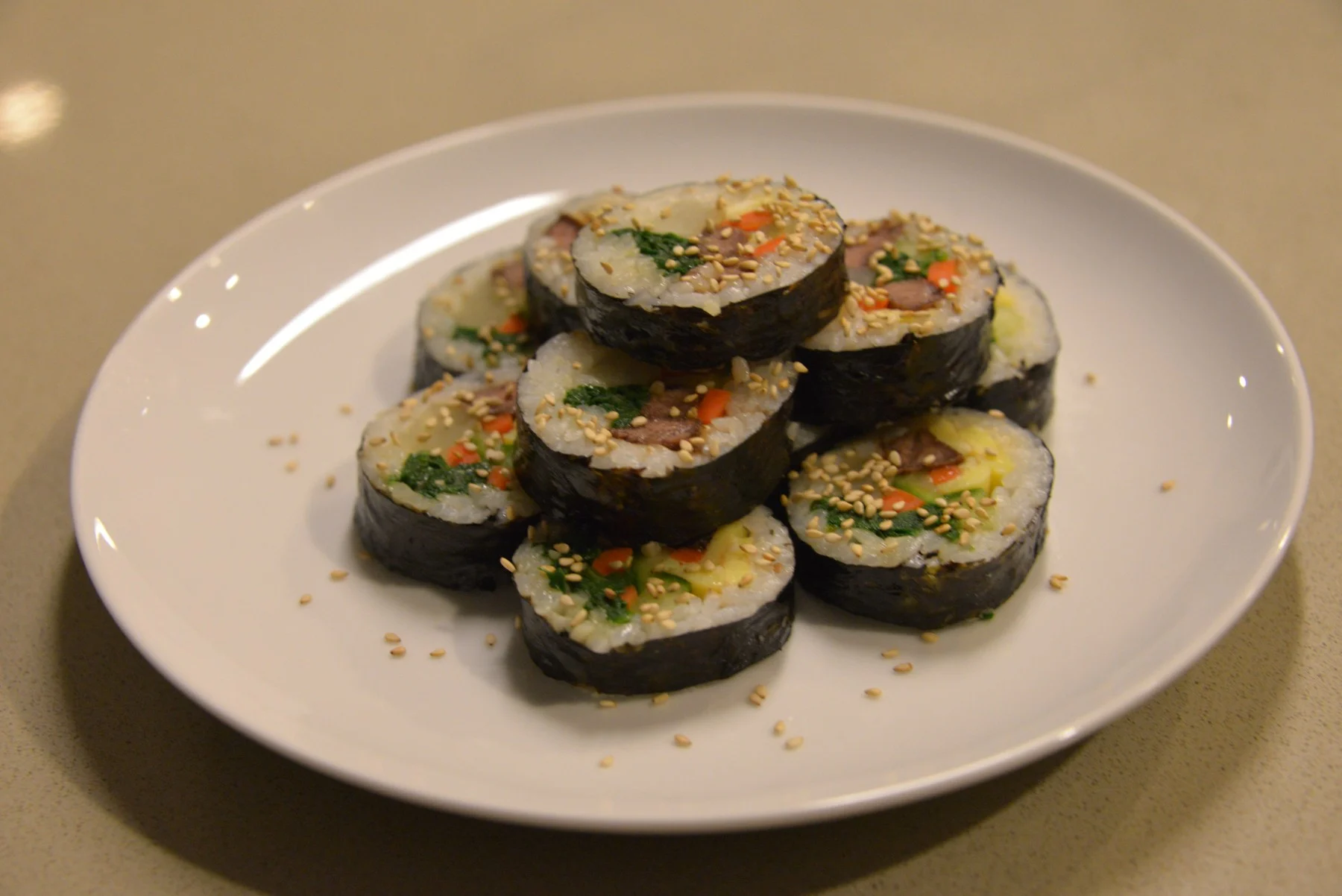Kimbap (김밥) represents the perfect fusion of convenience and flavor in Korean cuisine, where seasoned rice and colorful ingredients are rolled in dried seaweed to create a portable, satisfying meal. Once primarily known as picnic food or a lunch box staple, these Korean rice rolls showcase the Korean talent for transforming simple ingredients into something both beautiful and delicious. Unlike its Japanese cousin sushi, kimbap celebrates cooked and seasoned ingredients, creating a hearty, complete meal in every roll.
What makes kimbap particularly special is its versatility and visual appeal. The cross-section of each roll reveals a colorful mosaic of vegetables and proteins, each ingredient carefully chosen not just for flavor but also for color and texture. This attention to visual composition reflects the Korean principle of eating with your eyes first, while the variety of ingredients ensures a complete, nutritious meal in a single roll.
In modern Korean culture, kimbap has evolved from a humble home-packed meal to a beloved convenience food available in countless variations at specialty shops and convenience stores. Whether enjoyed as a quick breakfast, packed for a picnic, or grabbed as a quick meal on the go, kimbap continues to adapt to contemporary lifestyles while maintaining its essential character as a satisfying, complete meal in roll form.
Why You’ll Love This Recipe
- Customizable fillings
- Perfect for meal prep
- Great for picnics
- Kid-friendly
- Visually appealing
- Complete meal in one roll
What is Kimbap?
Kimbap (김밥) combines ‘kim’ (dried seaweed) and ‘bap’ (rice) to create rolls filled with a variety of cooked ingredients. Unlike sushi, the rice is seasoned with sesame oil rather than vinegar, and the fillings are typically cooked.

Korean Rice Rolls
Equipment
- Bamboo Rolling Mat
Ingredients
For the Rice:
- 3 cups cooked rice
- 2 tbsp sesame oil
- ½ tsp salt
- 1 tbsp sesame seeds
For the Fillings:
- 4 sheets dried seaweed
- 2 eggs made into thin omelet
- 1 carrot julienned
- 1 cucumber julienned
- 4 imitation crab sticks
- 4 pickled radish strips
- 1 cup spinach blanched and seasoned
- 1 cup bulgogi or spam
For Rolling:
- Sesame oil for brushing
- Rice paddle or spoon
- Bamboo rolling mat
Instructions
- Season rice with sesame oil, salt, and sesame seeds while still warm.
Prepare fillings:
- Make thin egg omelet and slice into strips
- Julienne carrots and sauté until tender
- Season blanched spinach with sesame oil and salt
- Cut all ingredients into similar-sized strips
Rolling:
- Place seaweed shiny side down, horizontally
- Spread rice thinly, leaving top edge bare
- Layer fillings in lower third of rice
- Roll tightly using bamboo mat
- Brush with sesame oil
- Slice into 8 pieces
Nutrition
Recipe Tips
- Use warm rice for easier spreading
- Keep hands wet when handling rice
- Roll tightly to prevent falling apart
- Cut with sharp knife
- Keep fillings similar in size
- Don’t overfill
Serving Suggestions
Serve with:
- Yellow pickled radish
- Kimchi
- Soy sauce for dipping
- Korean hot mustard
- Fresh vegetables
Variations
- Tuna mayo filling
- Kimchi filling
- Vegetarian option
- Cheese kimbap
- Spicy variations
Storage
- Best eaten fresh
- Can be stored wrapped in plastic for 1 day
- Avoid refrigeration if possible
- Do not freeze
- Keep at room temperature if eating same day
My Essential Korean Pantry contains several of these ingredients, specifically:
– Sempio Soy Sauce
– Kadoya Sesame Oil
– Shirakiku Roasted Sesame Seeds


Leave a Reply